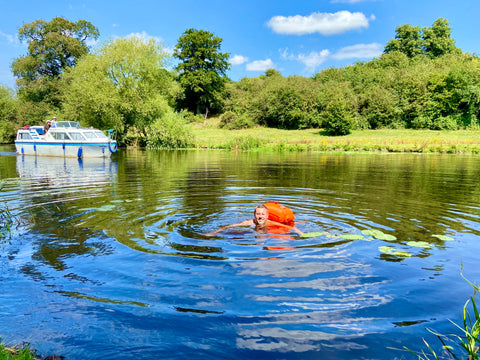
Transitioning from pool swimming to open water can be intimidating for some, but with proper safety measures, you can enjoy the wonders of swimming in the great outdoors. The primary difference you'll notice is the temperature, as open water is generally cooler than a pool. However, don't let the cold deter you from trying it out.
Choosing Your Location:
- Open water swimming is possible in rivers, lakes, and the sea across the US. Look for dedicated swimming areas at lakes or patrolled sections of beaches with lifeguards for added safety.
Find Your Community:
-
When swimming in an unpatrolled area, always swim with a buddy and inform others about your swim plans, including your expected return time. Take into account tides and currents when planning your swim.
-
Join online communities, such as Facebook groups, social groups, or local swimming clubs, to connect with other open water swimmers in your area. Local knowledge is valuable in finding safe swim spots, and you may even find fellow swimmers to join you.
Start Slow:
- Enter the water gradually, allowing your body to acclimatize to the temperature. Sudden immersion in cold water can lead to reduced blood flow to your limbs and uncontrollable breathing. Avoid jumping in to minimize the risk of cold water shock and potential collisions with underwater objects.
Stand Out for Safety:
- Visibility is crucial in open water, especially when sharing the space with boaters or other water users. Wear a bright-colored hat to make yourself more visible. Consider using an inflatable swim buoy attached to a leash. This buoy signals your presence and can also serve as a resting point during your swim. Some models even have waterproof compartments to keep your valuables safe.
Know Your Limits:
-
Start with shorter swims and gradually increase the distance as you gain more experience and adapt to the conditions. Always swim within your personal limits.
-
Pay attention to your body's signals. If you start feeling cold or fatigued, it's time to end your swim. These are signs that your core temperature may be dropping. It's important to stop before you become too cold, as it can be dangerous.
Post-Swim Care:
- Have warm clothes prepared onshore, as you will feel colder once you exit the water and blood circulation returns to your extremities. Enjoy a hot drink after your swim to help warm up, but avoid alcohol as it can cause heat loss despite its initial warming sensation.
By following these safety steps and gradually adapting to open water swimming, you can have an enjoyable and safe experience in the great outdoors.
Here is a quick recap of the above guidelines:
Read our Blog on the The Benefits of Cold Water Swimming
If you are taking a visit to the coast read our Beach Safety Guide



